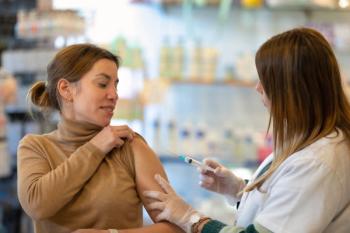
Dare to Be Different: How Community Pharmacies Can Break From the Crowd
"My dad will always tell you that you're not going to out-Walmart a Walmart. We're not going to out-price everybody, and we're not going to be preferred in all network contracts. Our game has got to be a little bit different, so what we have to do is built around services, relationships, and retention."
Tripp Logan, Pharm.D., a Missouri-based, second-generation community pharmacist, recounted as he discussed a lesson from his father in developing a prosperous relationship between a pharmacy and the community it serves.
Logan’s father and his business partner established L&S Pharmacy in 1976. Located in Charleston, Missouri, at the top of the Mississippi Delta and serving a population of nearly 6,000, L&S is not immune to the challenges facing many community pharmacies in the era of consolidation and vertical integration of services by health care giants such as CVS Health. As the health care system slowly shifts toward value and away from volume, community pharmacies must evolve to keep pace with the current trends.
Logan noted that community pharmacies are now in survival mode, requiring forward thinking and identification of potential new revenue streams to differentiate them from the competition. For L&S, the shifting landscape meant zeroing in on a prescription optimization program they had established several years prior. These programs ensure that patients have the right drug at the right dose, refilled appropriately, and that they can afford it.
PATIENTS WITH DIABETES POSE CHALLENGES
Given the growing prevalence of obesity in many communities across the United States, managing patients with diabetes quickly became a focus for the team at L&S. Although the prescription optimization efforts didn’t center solely on diabetes, Logan said this was the most common condition they had been seeing in their patients who needed extra support over the past decade.
“When you have diabetes, typically you have something else along with it, so things get really complex quickly,” Logan said. “These are patients who are very likely to fall through gaps and not have access to certain things. They get really impacted by formulary changes or hospitalizations and things like that.”
The first step in treating diabetes is ensuring access to care. However, Logan said treatment programs are experiencing the same rapid change as the entire health care system.
“In our experience, which is doing diabetes-specific patient engagement and support, engagement has evolved over the past 10 years,” Logan noted. “We started in one place, and we’re in a totally different place right now. As the health care industry evolves, you get curveballs left and right on how to treat diabetes and how to treat diabetes patients.”
Logan said L&S began to see some success in treating diabetes by assigning its pharmacy technicians to act as liaisons for individual patients, which improved adherence rates, the pharmacy found. L&S began to fine-tune the services they provided to this patient population by obtaining accreditation for diabetes education through the American Association of Diabetes Educators. They then began to teach group classes to their patients with diabetes, with the intention of billing Medicare for these services.
“We ran a couple of patients through the program, and we had some success stories, but the billing process to us was very cumbersome,” Logan said. “This was before a lot of the technology platforms could do that. What we found was that patients were still responding well to their liaison but not responding as well to these classes.”
ENTER THE COMMUNITY HEALTH WORKER
Logan, who also serves on his county board of health, noticed that this challenge was not unique to L&S. Throughout the county Logan served, getting patients to attend recurring classes that could be billable services was a hurdle. Then the L&S staff discovered a true differentiator that helped the pharmacy stand out: a community health worker (CHW). The National Community Pharmacists Association lists the following as key tasks that a CHW can assist patients with:
• Navigating local health and social service systems.
• Counseling and social support.
• Assisting in direct services and referrals.
• Offering culturally appropriate health care education.
• Advocating for individual and community needs.
• Assuring people are able to access the services they need.
• Building individual and community capacity.
“It’s not just health care stuff. It could be transit like getting them a ride, it could have something do with housing, it could be Meals on Wheels or any number of things,” Logan said.
Not only does an embedded CHW add to the value a pharmacy provides to patients and providers, but the position falls easily into the regular pharmacy work flow, since accredited pharmacy technicians already frequently deliver many of these services. The process and requirements for training CHWs vary from state to state, but Logan said the cost of the 12-week certification course may be covered by grants (see http://www.cdc.gov/dhdsp/pubs/toolkits/ chw-toolkit.htm).
“Our biggest barrier for the past 10 years was making sure we were identified as being different. Well, what makes us different? We’re like any other pharmacy out there,” Logan said. “We’ve got technicians, we’ve got pharmacists, we’ve got pills in bottles. So how do we make sure we’re identified as being different?”
This drive to be different can be spurred taking an existing pharmacy technician and putting them through a CHW certification course, an effective strategy that can actually drive profits while helping a pharmacy stand out.
“When you talk to a physician’s office, the health system often wants to hook their care manager up with the community health worker (instead of a pharmacy technician) even though it’s the same person. But it means something to them, and the prescribers understand that we have these services, so we get referrals,” Logan said. “Patients go where prescribers say. Doctors don’t tell patients where to fill their script unless there’s a service that differentiates them from a Walgreens or someplace like that.
“So in the past two years, we decided to take that angle. We started getting referrals for patients who weren’t ours before. It’s a good way to get people in your door and really win, which is what we’ve seen with community health workers because it’s something that was missing.”
DIABETES CARE MANAGEMENT STARTS AT HOME
As the health care system continues to wrestle with the high cost of medications, Logan said, the cost associated with ineffective care management is just as important to address. As such, community pharmacies are well positioned to make a difference.
“Here we are complaining about the prescription drug piece when we should be focusing on care management that is local,” Logan said. “There’s no better place than in a pharmacy that’s on street corners in urban and rural areas and has that extra touch point that no other provider has, which is the hook of medication. (Patients) have to come back and get (their prescription), so they’re guaranteed to have those touch points.”
Treating patients with chronic conditions such as diabetes creates multilayered challenges that differ across the United States based on the demographics of individual communities. Whether those barriers are caused by managing a disease, dif culties in the home or workplace or any other situation that creates stress, Logan noted, these patients are always at risk for high blood sugar. This creates an opportunity for community pharmacies and CHWs to step in and make a difference where larger entities typically lack the bandwith.
"You can't mass-produce local relationships, and that's ultimately our point of leverage,” Logan said. “Other pharmacies and chains aren’t our enemies — for somebody who just needs a prescription lled inexpensively and accurately, that’s a great place for it — that’s not the purpose of this. This is more about that small percentage of patients who cost the most dollars and have the highest likelihood of being in the hospital or even dying.”
Despite the potential investment in establishing an in-pharmacy CHW, it’s possible to reap immediate benefits. By bridging the gap between the medical side and the pharmacy side, Logan noted, L&S improved relationships with providers, as these disparate entities were finally speaking the same language.
“It’s amazing how that seems to be this piece we’ve been looking for that differentiates us, that tells the story by itself,” he said. “We’re doing care coordination and community health work out of the pharmacy, which is what we’ve always done. But we’re actually doing it with someone who’s been in the pharmacy for years but who went through a (CHW) course. We put a new title on someone who’s been in the pharmacy for years and changed the perception.”
Newsletter
Pharmacy practice is always changing. Stay ahead of the curve with the Drug Topics newsletter and get the latest drug information, industry trends, and patient care tips.











































































































































































































